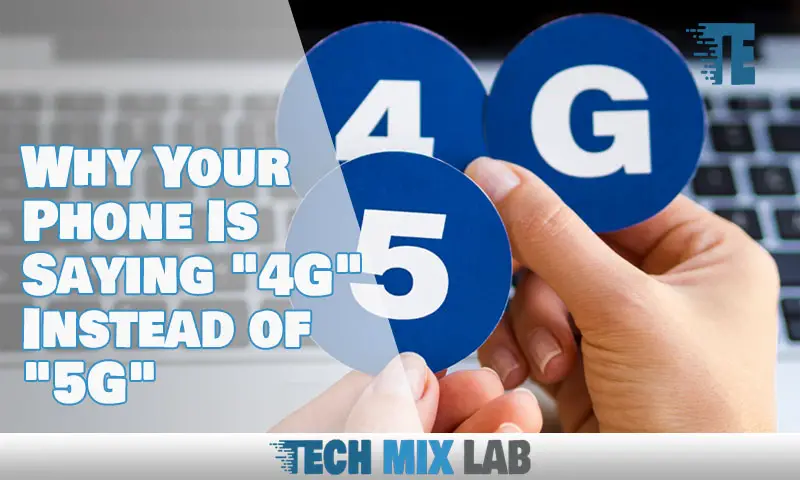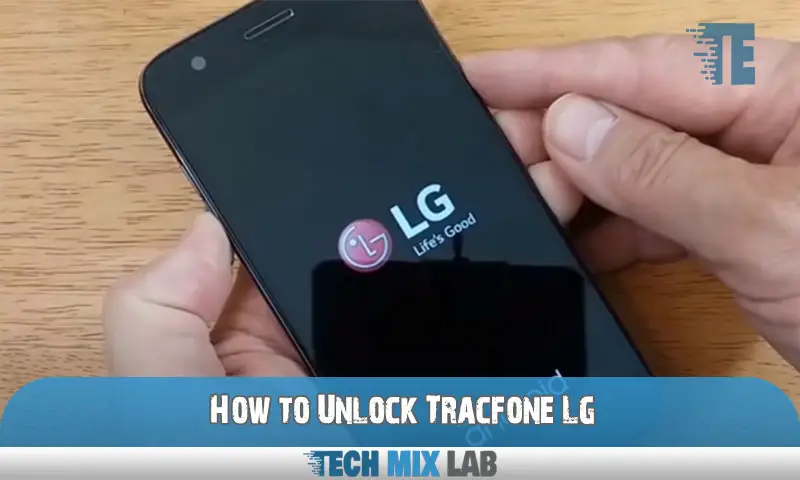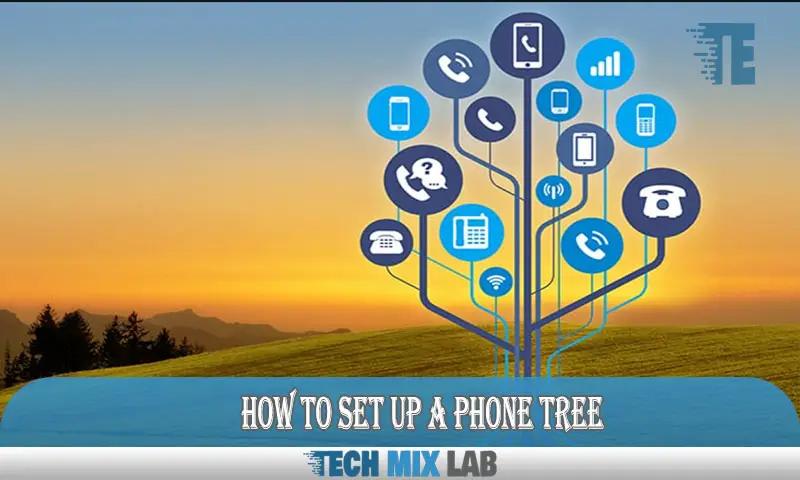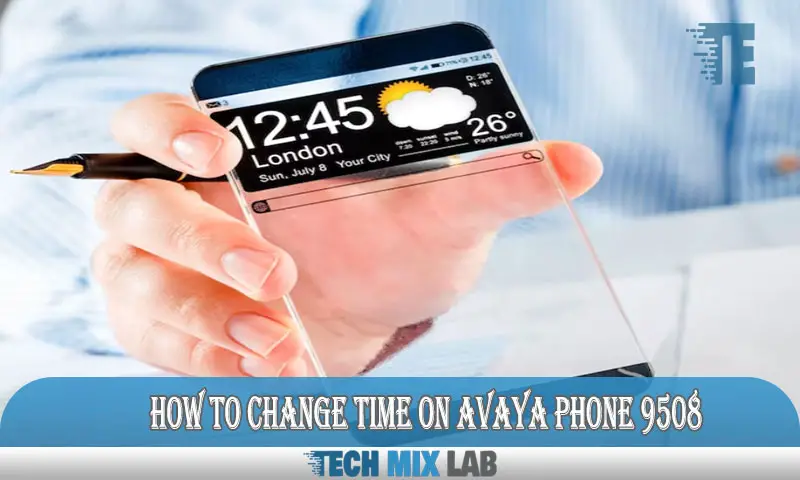You’ve just upgraded your phone to a 5G network, but you’re still seeing 4G on your display. What’s going on?
Believe it or not, it’s likely nothing wrong with your phone or the new 5G technology – it just so happens that 5G networks and 4G networks are able to coexist. Although 5G networks are significantly faster than their 4G predecessors, the two network types do not conflict with each other and can technically exist on the same device.
That being said, there are some differences that can affect your signal strength and connection speed. In this article, we will take a look at why your phone still says 4G even after upgrading to 5G. We will explore the benefits and drawbacks of both network types as well as how to ensure you get the most out of your 5G connection.
What Is 5G?
5G is the newest and fastest cellular network technology available. It’s an upgrade from the already-fast 4G networks and offers speeds up to 10 times faster with far lower latency. It also has improved capacity, allowing more devices to be connected to the same network at once. So if you’ve upgraded from 4G to 5G, you’ll enjoy faster download speeds, more reliable streaming and video calling, quicker response time for online games and smoother access to social media apps.
In addition, 5G phones are designed to be compatible with both 5G and 4G networks so that if the user moves out of 5G coverage they will switch back to 4G without any disruption in their service experience. However, it’s important to keep in mind that 5G network coverage is not available everywhere yet—so if your phone still says 4G even after upgrading, it may be because you’re out of range of a 5G connection.
Explaining the Difference Between 4G and 5G
You could be perplexed as to why your gadget displays 4G when it should be showing 5G. The distinction between the two standards holds the key to the solution.
- First of all, super-high-frequency airwaves are used to create 5G networks (high-band spectrum). Reduced latency than 4G due to this intense wavelength’s ability to transfer greater bits of data more quickly (under 5 milliseconds vs 60-98 milliseconds)
- Offers more flexibility than 4G networks
- Quicker reflex times for applications involving virtual and augmented reality.
The high-band spectrum that 5G networks are based on also enables a more effective use of the existing airwaves, resulting in improved coverage and higher speeds while using less energy. The fact that 5G offers a solution to boost connection without compromising performance or user experience is the reason why it has been adopted by a wide range of sectors and consumers alike.
Why Does My Phone Say 4G Instead of 5G?
Have you ever upgraded to a 5G phone, only to still see 4G on your display? There are a few reasons why your phone could be receiving a 4G signal instead of the ultra-fast 5G.
Compatible with 4G and 5G Networks
The first is that even if you’ve purchased a 5G phone, it’s designed to be compatible with both 4G and 5G networks. When your phone is away from a 5G tower’s range, it will automatically switch back to using 4G network.
Limited Coverage
Another reason is because 5G coverage is not available in all areas yet, so phones may switch to 4G when out of range. So even if you have a new 5G device, there are areas or places where you will end up getting fast speeds from the 4G network instead of the high-speed speeds of the new generation technology.
Radiating Effect
Lastly, another difference between the two networks is that 4G networks use low-band frequency radio waves that travel much further than the mid-band radio waves used by the emerging 5G technology. Since 5G networks can’t extend as far as their predecessor, this means that at times your phone will automatically switch back to 4g in order for it connect more efficiently with cell towers located further away – avoiding congested towers closer by.
The Cost of Upgrading to 5G
If you recently switched to a 5G-capable phone, you might be perplexed as to why your screen still displays 4G. Although while 5G phones are made to work with both 4G and 5G networks, not everyone has access to the hardware needed to achieve those faster speeds.
The price of upgrading to 5G can be a significant barrier. Due to the high infrastructure costs associated with 5G networks, many customers end up paying more for device plans and services. This is due to the fact that 5G networks take more time, money, and equipment because they provide faster speeds, lower latency, and more capacity than 4G networks.
It’s also important to remember that 5G networks are constructed using high-band spectrum, or super-high-frequency airwaves. These frequencies come at a cost, and while they increase user experience in terms of connection speed and reliability, they also come with higher maintenance and setup costs.
4G vs 5G: Advantages and Disadvantages
Though 5G networks have set the stage for faster speeds and improved performance, there are both advantages and disadvantages compared to 4G. Let’s take a look:
Advantages
5G promises lower latency than 4G, meaning users can experience a smoother connection with less buffering. 5G also offers higher speeds, ranging from 100 Mbps to 1 Gbps, allowing you to stream content seamlessly and quickly download large files.
Disadvantages
One of the major drawbacks is that 5G networks are built on super-high-frequency airwaves, also known as high-band spectrum. This creates challenges related to signal range and reliability—high-band spectrum doesn’t reach as far indoors or through physical obstacles like walls or windows.
Preparing Your Phone for a Smooth Upgrade
If you’ve recently upgraded your phone, you may still be seeing ‘4G’ listed on your network status. Don’t panic—it’s perfectly normal for a phone powered by 5G technology to show 4G when it is connecting to the network.
Making Sure Your Phone Is Ready for 5G
In order to make sure that your phone is ready for the 5G upgrade, there are a few steps that you should take in order to ensure a smooth transition:
- Make sure that your phone is compatible with 5G networks. Many 4G phones are not able to use the new technology, so it’s important to check before making an investment in a new device or plan.
- Make sure that your provider offers 5G coverage in your area. Not all providers have rolled out their 5G networks yet, so check before making a switch or upgrading to an unlimited data plan.
- If you’re using an early 5G phone, you may need to toggle between 4G and 5G networks in order to access the full range of speeds from both technologies.
By following these steps, you can ensure a smooth transition from the outdated 4G LTE networks to the modern and improved 5G networks—leaving you with lightning-fast data speeds and improved connection quality no matter where you are!
Conclusion
In conclusion, upgrading to 5G is a smart move but you should bear in mind that your phone may still say ‘4G’, even if it is using the 5G network. This is because the same transceiver hardware is used for both 4G and 5G networks, and so the term ‘4G’ remains to describe the underlying technology.
While this may seem confusing, it should not affect your experience with the 5G network. This is because the 5G network has its own unique frequency bands and data speeds. As such, you should experience higher data speeds than the 4G network, even if the label on your phone still says ‘4G’.





